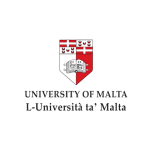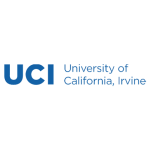
Smithsonian Institution – USA
The Smithsonian Institution (/smɪθˈsoʊniən/ smith-SOH-nee-ən), also known simply as the Smithsonian, is a group of museums and research centers administered by the Government of the United States. It was founded on August 10, 1846, « for the increase and diffusion of knowledge ». The institution is named after its founding donor, British scientist James Smithson. It was originally organized as the « United States National Museum », but that name ceased to exist as an administrative entity in 1967.
Termed « the nation’s attic » for its eclectic holdings of 154 million items, the Institution’s 19 museums, 21 libraries, nine research centers, and zoo include historical and architectural landmarks, mostly located in the District of Columbia. Additional facilities are located in Arizona, Maryland, Massachusetts, New York City, Pittsburgh, Texas, Virginia, and Panama. More than 200 institutions and museums in 45 states, Puerto Rico, and Panama are Smithsonian Affiliates.
Pays
Pays
États-unis
Informations sur Smithsonian Institution – USA
The Institution's 30 million annual visitors are admitted without charge. Its annual budget is around $1.2 billion, with two-thirds coming from annual federal appropriations. Other funding comes from the Institution's endowment, private and corporate contributions, membership dues, and earned retail, concession, and licensing revenue. Institution publications include Smithsonian and Air & Space magazines.
The British scientist James Smithson (1765–1829) left most of his wealth to his nephew Henry James Hungerford. When Hungerford died childless in 1835, the estate passed "to the United States of America, to found at Washington, under the name of the Smithsonian Institution, an Establishment for the increase & diffusion of knowledge among men", in accordance with Smithson's will. Congress officially accepted the legacy bequeathed to the nation, and pledged the faith of the United States to the charitable trust on July 1, 1836. The American diplomat Richard Rush was dispatched to England by President Andrew Jackson to collect the bequest. Rush returned in August 1838 with 105 sacks containing 104,960 gold sovereigns (about $500,000 at the time, which is equivalent to $11,764,000 in 2018).
Once the money was in hand, eight years of Congressional haggling ensued over how to interpret Smithson's rather vague mandate "for the increase and diffusion of knowledge."Unfortunately, the money was invested by the US Treasury in bonds issued by the state of Arkansas, which soon defaulted. After heated debate, Massachusetts Representative (and ex-President) John Quincy Adams persuaded Congress to restore the lost funds with interest and, despite designs on the money for other purposes, convinced his colleagues to preserve it for an institution of science and learning. Finally, on August 10, 1846, President James K. Polk signed the legislation that established the Smithsonian Institution as a trust instrumentality of the United States, to be administered by a Board of Regents and a Secretary of the Smithsonian.
Autres organismes qui pourraient vous intéresser
ESADE Business School
ESADE’s key mission is to train individuals to become highly-competent professionals fully aware of their social responsibility. We promote education and research through our...
University of Malta
There are some 11,500 students including around 1,000 international students from 92 different countries and 450 visiting students, following full-time or part-time degree and dipl...
University of California Irvine – USA
University of California, Irvine (UCI) Overview and Membership Medical and Health Sciences UCI oversees several key facilities and programs, including: UC Irvine Medical Center: A ...






